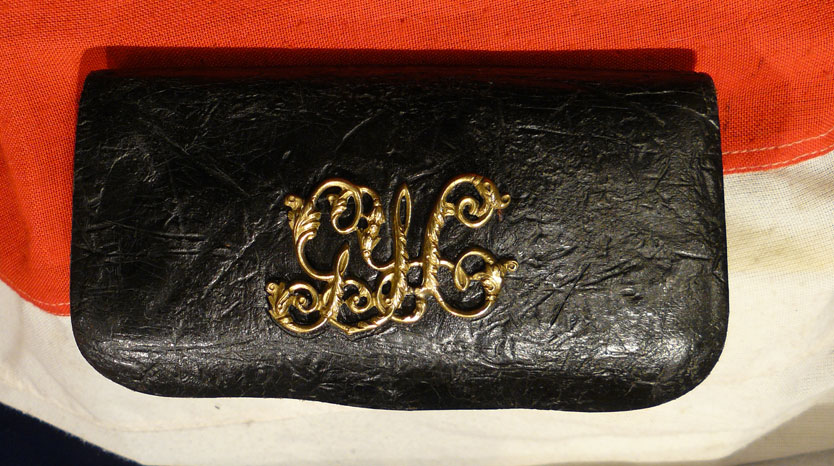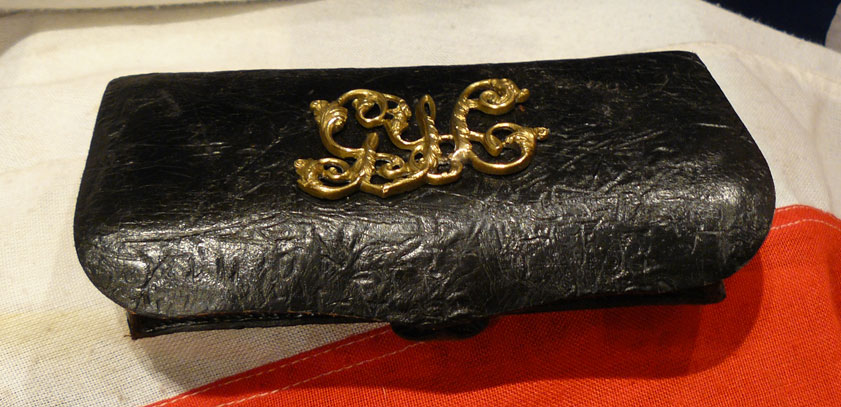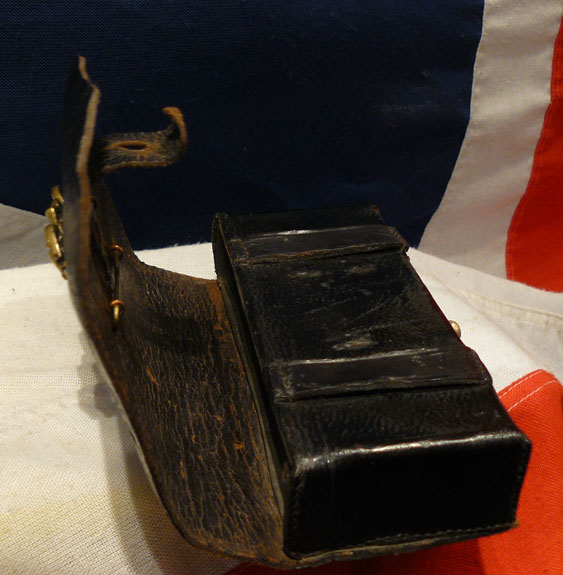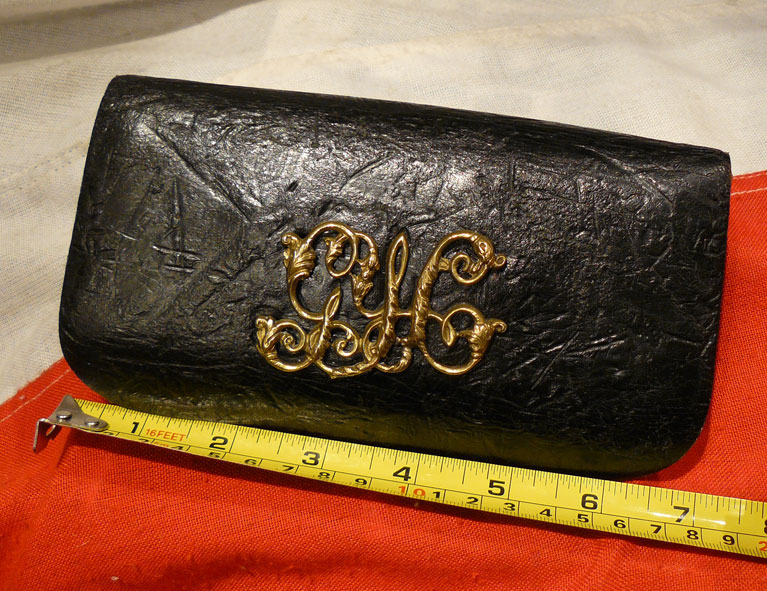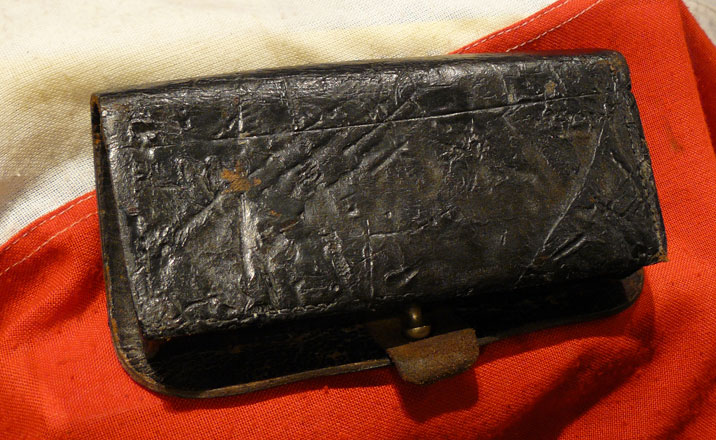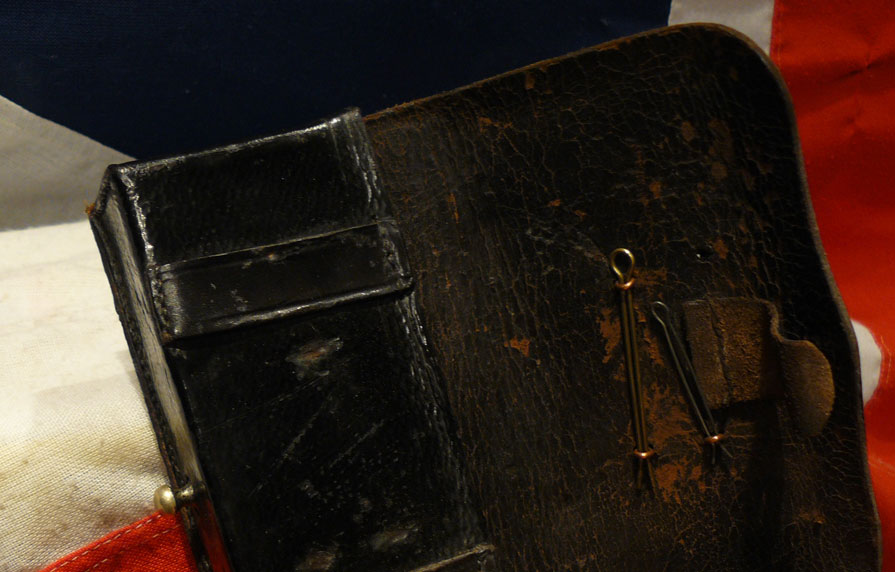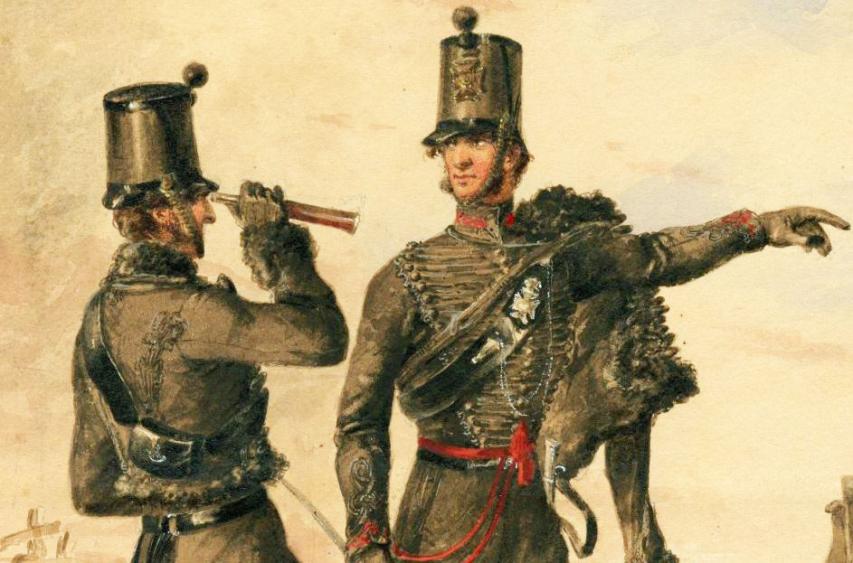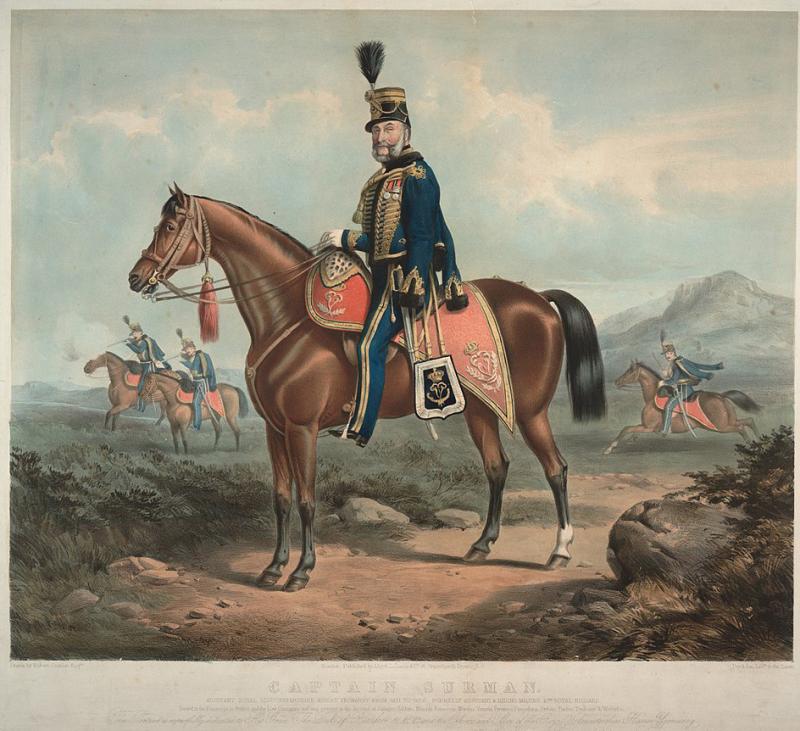A Scarce, Black Leather, Victorian Gloucestershire Yeomanry Cavalry Ammunition Cross-Belt Pouch.
A good example of these scarce and very desirable items of militaria from one of Queen Victoria's Yeomanry Cavalry regiments. Leather pouch, with tin box interior and gilt brass regimental device to flap.
New troops of yeomanry were raised in the 1830s in response to the Swing Riots. The first such troop established in Gloucestershire was the Marshfield and Dodington Troop, raised in 1830 by William Codrington, from which the Royal Gloucestershire Hussars dated its formation. The troop comprised three officers, a quartermaster, four non-commissioned officers, a trumpeter and fifty troopers, and was recruited from the tenants of Codrington's estate and those of his neighbours, including that of the Duke of Beaufort. In 1831, six more troops were raised by members of the Gloucestershire gentry in Fairford and Cirencester, Stroudwater, Tetbury, Gloucester, Winterbourne and Stapleton, and Alveston. That same year, the Dodington and Tetbury Troops were sent to Bristol in response to civil unrest following the defeat of the Second Reform Bill in the House of Lords.
In 1834, all of the Gloucestershire yeomanry captains met in the hamlet of Petty France in south Gloucestershire and agreed to combine their troops into a single regiment, to be named the Gloucestershire Yeomanry Cavalry. Its first commanding officer was the Marquis of Worcester, who became the 7th Duke of Beaufort in 1835, thus beginning the regiment's long association with the Beaufort family. The new regiment was ranked 24th in the yeomanry order of precedence and comprised seven troops with a total strength of 26 officers and 382 other ranks. Adopting the uniform of light dragoons, each man was armed with sword and pistol, and twelve skirmishers in each troop were armed with muzzle-loading carbines. The regiment's first deployment came in 1838, when the Dodington and Winterbourne Troops helped police a Chartist rally in Bristol.The 'Royal' prefix was granted in 1841, and in 1847 the regiment adopted a blue hussar uniform and the name Royal Gloucestershire Hussars. The authority of the Duke of Beaufort is evident in his order, in 1846, that all members should grow moustaches "in the form of a carving knife", an instruction that was derided in the pages of Punch magazine at the time, and his insistence the next year that the regiment wear the second jacket over the back, Hungarian style, instead of the usual English-style over the shoulder.
The influence of the social order on the composition of the regiment at this time can be observed from an incident in 1847. It involved a disagreement between Lord FitzHardinge, Lord-Lieutenant of Gloucestershire, and his brother, Grantley Berkeley, a member of parliament and captain of the Berkeley Troop, which had joined the regiment in 1840. In pursuing his grievance against his brother, FitzHardinge pressured his tenants into resigning from the troop and threatened some with the loss of their farms if they did not. Further insight into the regiment's strong ties to the farming community can be found in the records of the annual exercises. In 1865, the permanent duty was deferred until the autumn due to an early harvest, and participation in a major 14-day exercise in 1871 was cancelled due to a late harvest. Attendance at the annual assemblies dropped below 300 men in the late 1870s and early 1880s, compared to 445 in 1875, due to a succession of bad harvests. In 1890, the regiment boasted four Masters of Hounds and a large number of fox hunters in its membership, both officers and other ranks, and that year it adopted an old hunting song, D'ye ken John Peel, as its regimental march.
Picture in the gallery of Captain Surman, adjutant of the Royal Gloucestershire Hussars 1834 - 1858
The cross belt was predominantly used from the 1700s (American Revolutionary War) to the 1840s they were not part of a soldier's equipment in the American Civil War and Anglo-Zulu War/First Boer War.
For most line infantry, skirmishers, light infantry, grenadiers and guard regiments during much of Europe's Age of Gunpowder, either a cross belt or two shoulder belts were worn.citation needed One configuration for the belts would be the cartridge box on the right hip and sword scabbard on the left. Such equipment would be attached to the belt at its lowest point, where it rests on the hip. Officers almost never carried muskets or rifles, so they typically wore only one shoulder belt, such as for the pistol cartridge box or for a sabre scabbard. As officers were often aristocratic and used many independent symbols for their family, rank, and command, their uniforms and gear organisation could be highly variable.
For British infantry, the cross belt had a metal belt plate with the regiment of the soldier inscribed on it. We show in the gallery an old print of officers of another regiment but wearing the pouch.
Code: 16622
385.00 GBP

